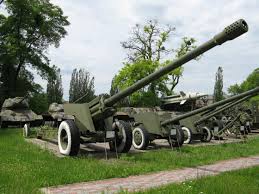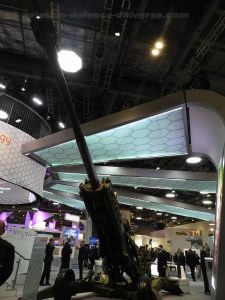
- Indian Artillery Committed To The Force, The Fight And The Fire
- Army celebrates 193rd Gunners Day
By Team ADU
New Delhi. 28 September 2020. It was in an upbeat mood that the Regiment of Artillery, as the second largest Arm of the Indian Army celebrates 193rd Gunners’ Day today. Amidst celebrations it is just apt to remember that the day has a special significance in the annals of the history of the Regiment of Artillery as the first Indian Artillery Unit, 5 (Bombay) Mountain Battery equipped with 2.5 inch Guns, was raised on this day in 1827.
With the M777 guns already in the Indian Army’s fleet, got from the BAE Systems, Artillery modernisation seems to have got out of its slumber. The commitment is to have 145 guns, of which the first 25 guns will be imported, at the rate of two every month from September 2018, and the remaining to be assembled locally by the private company Mahindra Defence. Mahindra has been told to dispatch five guns every month from March 2019. The entire induction will be completed by 2021. There will be seven regiments that will be in the mountain strike corps that is being raised in the North-Eastern sector.
Under the Army’s Field Artillery Rationalisation Plan (FARP) formulated in 1999, the Regiment of Artillery had decided to standardise the calibre of its guns at 155 mm so as to ensure commonality of ammunition. The artillery plans to acquire a total of 2,820 guns of all types to replace obsolescent guns and to equip the new regiments now under raising.
And who says India cannot make its artillery guns. L&T, Kalyani, Tata, PunjLlyod and OFB all have a slice of the pie. The Kalyani group has made the Bharat Ultra-Light Howitzer that could pose direct competition against the M777 Howitzers, made out of Titanium. Bharat Ultra-Light Howitzer has been developed using light weight exotic materials like Titanium and Aluminium based alloys. The company also has a system ready for testing.
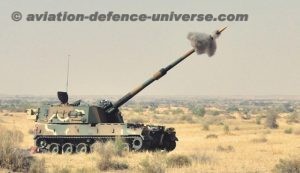 L&Ts K9 VAJRA-T howitzer,in partnership with Samsung, has already started the trials . L&T’s Pune facility is producing the Vajra which beats its Russian competitor on several technical grounds, including rate of fire, accuracy and mobility trials.
L&Ts K9 VAJRA-T howitzer,in partnership with Samsung, has already started the trials . L&T’s Pune facility is producing the Vajra which beats its Russian competitor on several technical grounds, including rate of fire, accuracy and mobility trials.
TATA unveiled a new wheeled howitzer artillery system a few years back. The newly developed 155mm Caliber Howitzer is mounted on an eight-wheeled TATA military truck to enhanced mobility. The prototype of the howitzer has been produced by the company which is around 55% indigenous.
Ashok Leyland has gone ahead and made the Field Artillery Tractor (FAT) 6×6 on Super Stallion platform which will function as a Common Gun Tower for all artillery guns. This versatile FAT provides the Army unprecedented flexibility in rapid deployment, and utilization of artillery resources. Ashok Leyland recently won orders of over 450 vehicles on Super Stallion platform from the Indian Army.
French firm Nexter Systems, Larsen & Toubro and Ashok Leyland Defence Systems have entered into an agreement to collaborate for the Indian Army’s Mounted Gun System (MGS) artillery programme. The consortium led by L&T as the prime contractor will customise for Indian conditions, the Caesar artillery system fitted onto a 6×6 Super Stallion chassis from Ashok Leyland.
Punj Lloyd might have suffered a set back when its partner Singapore Technologies got banned but it bounced back by emerging victorious in awarding of a Rs 670-crore contract for upgrading the army’s ageing Zu-23-2B anti-aircraft guns, capable of engaging both aerial and ground targets.
The firm has partnered with Slovakian defence company EVPU to convert the mechanical Soviet-era gun, developed in the late 1950s, into an automatic system. The plan is to upgrade 468 guns.The guns would be upgraded over a period of four years. The contract covers maintenance of the guns for 15 years.
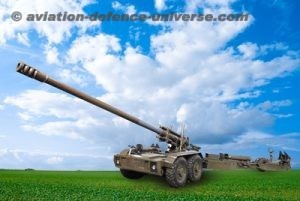 The Artillery has been the backbone of 1947-48, 1962, 1965, 1971 and 1999 recently. The regiment of Artillery has also undertaken major steps towards modernisation, both in terms of equipment and support systems under “Make in India” initiative of the Government of India , despite a two decades of gap in procurement since Bofors.
The Artillery has been the backbone of 1947-48, 1962, 1965, 1971 and 1999 recently. The regiment of Artillery has also undertaken major steps towards modernisation, both in terms of equipment and support systems under “Make in India” initiative of the Government of India , despite a two decades of gap in procurement since Bofors.
The Regiment of Artillery is an operational arm (a regiment/corps) of the Indian Army. Formerly part of Royal Indian Artillery (RIA) of British Indian Army which itself traces its origins to the formation of Bombay Artillery in 1827. It was later involved in extensive service in the First World War, in East Africa, Gallipoli, Mesopotamia and Palestine.
Today the Indian Artillery Corps is the second largest arm of the Indian Army, and with its guns, mortars, rocket launchers, unmanned aerial vehicles, surveillance systems, missiles and artillery firepower, it constitutes almost one-sixth of its total strength.
Historically Mughal Emperor Babur is popularly credited with introduction of Artillery in India, in the Battle of Panipat in 1526, where he decisively used gunpowder firearms and field artillery and defeated the much larger army of Ibrahim Lodhi, the ruler of the large North Indian Delhi Sultanate, thus not just laying the foundation of the Mughal Empire but also setting a precedent of all future battles in the subcontinent. However evidence of earlier use of gun by Bahmani Kings in the ‘Battle of Adoni’ in 1368 and King Mohammed Shah of Gujarat in fifteenth century have been recorded.
The East India Company raised the first regular company of Artillery in 1748, with a small percentage of Indian Gunners called Gun Lashkars, Tindals and Serangs. A few Indian mountain artillery batteries, officered by the British, were raised in the 19th century and formed part of the Royal Artillery. The Royal Indian Artillery (RIA) of the British India Army, was raised on September 28, 1827, as a part of the Bombay Army, a presidency army of the Bombay Presidency. It was later renamed as 5 Bombay Mountain Battery, and participated in the First Anglo-Afghan War (1839–1842).
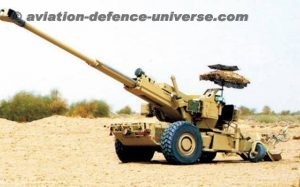 The Indian Rebellion of 1857 was sparked off in Meerut on 10 May 1857. Many of the Indian personnel of the Bengal Artillery were involved in the mutiny and the three battalions of foot artillery then in existence were all disbanded in 1862. Subsequently all Indian artillery units were disbanded except for four mountain artillery batteries of the Bombay Army and four field batteries of the Hyderabad Contingent. Major Richard Keatinge of Bombay Artillery was awarded the Victoria Cross in 1858 for his service during the Indian Rebellion. So this os self explanatory how important artillery is to any battle and any Army.
The Indian Rebellion of 1857 was sparked off in Meerut on 10 May 1857. Many of the Indian personnel of the Bengal Artillery were involved in the mutiny and the three battalions of foot artillery then in existence were all disbanded in 1862. Subsequently all Indian artillery units were disbanded except for four mountain artillery batteries of the Bombay Army and four field batteries of the Hyderabad Contingent. Major Richard Keatinge of Bombay Artillery was awarded the Victoria Cross in 1858 for his service during the Indian Rebellion. So this os self explanatory how important artillery is to any battle and any Army.
George S. Patton famously said, “I do not have to tell you who won the war. You know, the artillery did.” Over the ages, Artillery has proven to be the arm of decision, a battle winning factor and will continue to be the pivotal arm in all future battles. The Indian Regiment of Artillery has embarked on a path of modernisation, both in terms of equipment and support systems as well under the “Make in India” initiative of the Government of India after more than thirty years since it got the Bofors.


































